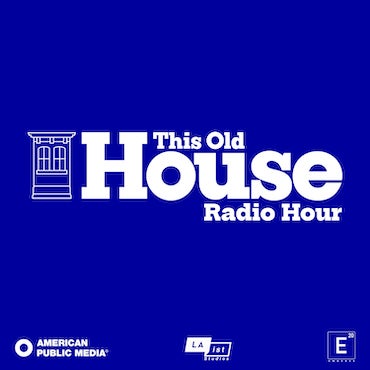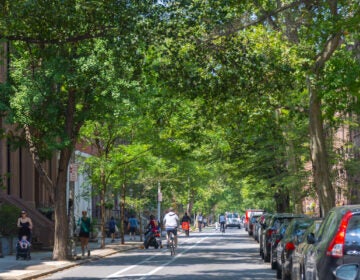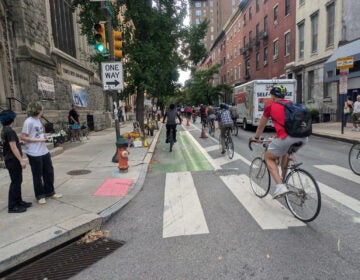Not in my traffic lane: How Society Hill kept out safer bikeways
Society Hill Civic Association blocked installation of barrier posts designed to protect people in bike lanes. Neighbors want the veto to be reconsidered.
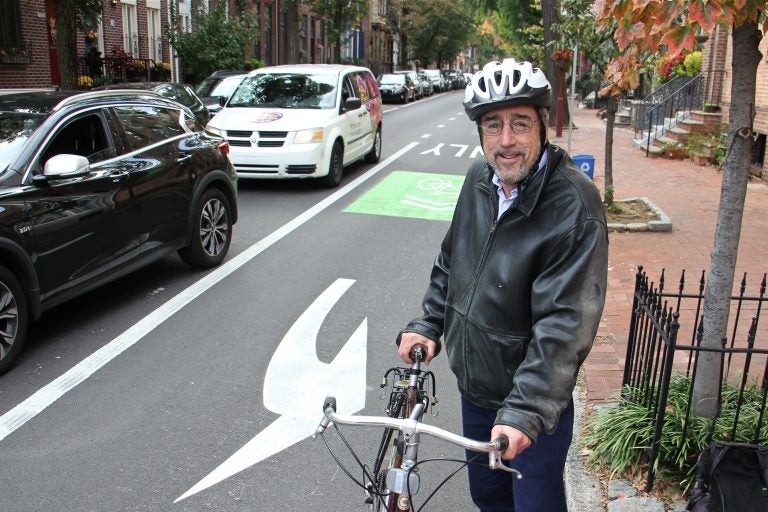
Larry Spector, president of the Society Hill Civic Association, hops off his bike at 5th and Pine streets. (Emma Lee/WHYY)
Kasia Stein of Society Hill rides her bicycle on Spruce and Pine streets every day. She now rides in improved bike lanes, which came in response to years of advocacy following a fatal 2017 crash and another resulting in critical injury just weeks later.
The improvements included moving the bike lanes to the left side of the road to improve visibility and installing flexible delineator posts between the bike and traffic lanes at each intersection to slow left-turning vehicles. The city put in the new infrastructure between Front and 21st streets.
Stein followed the progress of the project through her local newsletter, so when she noticed the physical barriers were gone from the corners once she crossed Eighth Street into her neighborhood, she figured the work was incomplete.
“I assumed it would be another couple of weeks,” said Stein, who has lived in Society Hill for a decade. “It was a multi-month process with the milling of the street, then they paved the street, then block by block they were adding the painting stripes. And then finally the posts.”
Stein figured the city would get to her neighborhood eventually. That was until she learned that the civic association charged by the city to represent her as a resident had blocked the installation of the barriers. The Society Hill Civic Association had decided the city had done enough on the streets, and formally opposed the traffic-slowing guards. The city obliged.
“The decision to not include delineators east of 8th Street was made as part of our extensive community engagement and outreach,” Kelly Cofrancisco said in an emailed statement from the city’s Office of Transportation, Infrastructure, and Sustainability.
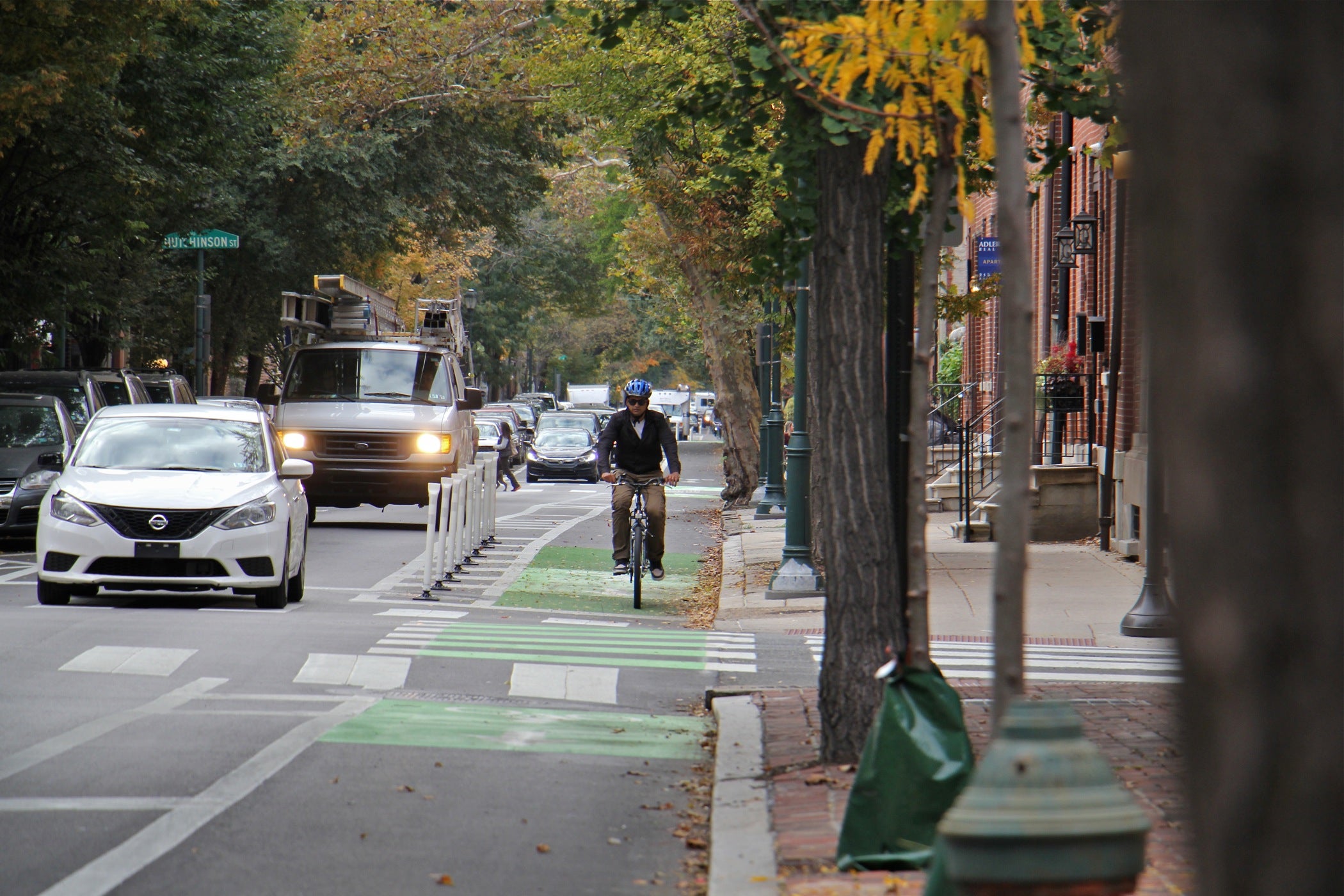
The office recently caught flak from car-owning South Philly residents after the 11th Street repaving project cost them valuable parking spaces, though the city made efforts to inform residents.
Not installing the posts in Society Hill was the city’s way of saying, “We hear you.”
“OTIS is committed to community engagement both as a reflection of the Administration’s core values and as an indispensable tool in providing infrastructure that meets Philadelphians’ needs,” Cofrancisco said.
Two other neighborhood groups affected by the Spruce and Pine project, Center City Residents Association and Washington Square West Residents Association, supported the installation. Their posts went in. However, Society Hill adhered to findings in a study it commissioned to understand what was best for its stretch of Spruce and Pine.
“We have SEPTA buses the other neighborhoods don’t, when it comes to travel on Spruce and Pine Streets,” said Larry Spector, president of the civic association. “We have tourist buses, we have carriages. All of these types of vehicles take up the traffic lane …There’s really no demonstrable advantage from having the delineators.”
However, the two streets are heavily traveled by bicyclists from all over the city. Though the project had been in the works since 2016, the crash death of bicyclist Emily Fredricks in November 2017, followed by the critical injury of another bicyclist, Becca Refford, just weeks later, both hit by trucks making right turns, brought urgency to the project.
Sophia Ambrosino of South Philly is a bicycle commuter who use the corridors often.
“The posts do make it safer for bikers,” she said. “So it would be nice to have more of them.”
The posts also provide more security for pedestrians, some of whom have mobility issues, and bikers of the future, said Stein, a parent to a toddler and a newborn.
“I feel safer,” she said. “Having that extra protection is helpful for me, as a peace of mind. Not only as a cyclist for myself and my husband, but when my kids are going to be riding themselves.”
Now, a group of nearly 40 Society Hill residents who say their civic association’s stance does not reflect their own are asking the group to reconsider. The hope is that the group will recant its opposition and the city will come back to install the bike lane protectors.
“When our civic association opposes minimal safety treatments, we are not just putting the lives of our own neighborhood residents in danger, but the lives of thousands of people who use our streets every day,” residents wrote in the letter.
Officials at OTIS said they’re aware of the fissure within the community. The city is “open to working with SHCA and other Society Hill residents to address their concerns related to this project,” Cofrancisco said.
While the Spruce and Pine Street project was in the proposal phase, the civic association circulated a petition opposing the delineator posts. Spector said the petition accrued 500 signatures, but residents said there was a misunderstanding among those who signed.
“The Society Hill Civic Association began circulating a petition warning residents against protecting the entirety of Spruce and Pine Streets for people who ride bicycles, not intersection treatments,” wrote residents in the letter. “We are seeking an opportunity to present the facts on this issue so that all community members’ needs can be heard.”
WHYY is your source for fact-based, in-depth journalism and information. As a nonprofit organization, we rely on financial support from readers like you. Please give today.

